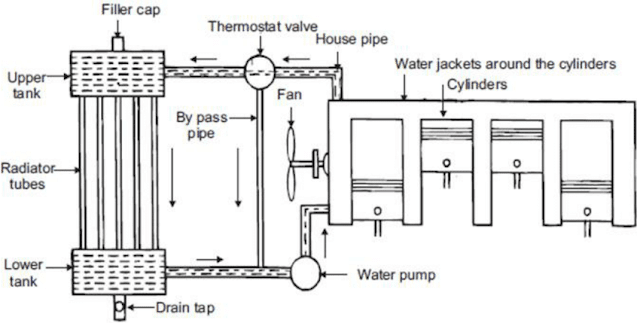Integration into the Electric Vehicle System:
- Determine the power requirements of your electric vehicle (EV) and select a PMSM with the appropriate power rating.
- Integrate the PMSM into the drivetrain of the vehicle, ensuring proper alignment and connection to the transmission system or directly to the wheels.
Motor Controller and Inverter Setup:
- Choose a motor controller and inverter suitable for PMSM operation. These components are crucial for controlling the speed and torque of the motor.
- Connect the PMSM to the motor controller, ensuring proper wiring and adherence to the manufacturer's guidelines.
Power Supply:
- Provide a reliable power supply to the motor controller and inverter. This usually involves connecting the system to the electric vehicle's battery pack.
- Ensure that the voltage and current supplied to the PMSM align with its specifications for optimal performance.
Control System Configuration:
- Implement a control system that manages the operation of the PMSM. This includes control algorithms that regulate the speed and torque based on user input and vehicle conditions.
- Fine-tune the control parameters to achieve the desired balance between efficiency and performance.
Sensor Integration:
- PMSMs often require feedback from sensors such as encoders or resolvers to provide information about the rotor position.
- Integrate these sensors into the motor system and connect them to the motor controller for accurate control.
Regenerative Braking Implementation:
- Configure the control system to enable regenerative braking. This involves programming the PMSM to act as a generator during braking, recovering energy and feeding it back to the battery.
Cooling System:
- Implement a cooling system to manage the heat generated during PMSM operation. Depending on the design, this may involve liquid cooling or air cooling to maintain optimal temperatures.
Testing and Calibration:
- Conduct thorough testing of the entire PMSM system under various operating conditions.
- Calibrate the control system to ensure smooth acceleration, deceleration, and efficient energy utilization.
Safety Measures:
- Implement safety features in the control system, such as overcurrent protection and fault detection, to ensure the reliable and safe operation of the PMSM.
Monitoring and Maintenance:
- Implement a monitoring system to keep track of the PMSM's performance and detect any anomalies.
- Establish a regular maintenance schedule, focusing on inspections, lubrication (if applicable), and addressing any issues promptly.
Compliance and Certification:
- Ensure that the PMSM system complies with relevant safety standards and regulations.
- Seek certification for the overall electric vehicle system, considering the integration of the PMSM.
Integration into the Electric Vehicle System:
- Determine the power requirements of your electric vehicle (EV) and select a PMSM with the appropriate power rating.
- Integrate the PMSM into the drivetrain of the vehicle, ensuring proper alignment and connection to the transmission system or directly to the wheels.
Motor Controller and Inverter Setup:
- Choose a motor controller and inverter suitable for PMSM operation. These components are crucial for controlling the speed and torque of the motor.
- Connect the PMSM to the motor controller, ensuring proper wiring and adherence to the manufacturer's guidelines.
Power Supply:
- Provide a reliable power supply to the motor controller and inverter. This usually involves connecting the system to the electric vehicle's battery pack.
- Ensure that the voltage and current supplied to the PMSM align with its specifications for optimal performance.
Control System Configuration:
- Implement a control system that manages the operation of the PMSM. This includes control algorithms that regulate the speed and torque based on user input and vehicle conditions.
- Fine-tune the control parameters to achieve the desired balance between efficiency and performance.
Sensor Integration:
- PMSMs often require feedback from sensors such as encoders or resolvers to provide information about the rotor position.
- Integrate these sensors into the motor system and connect them to the motor controller for accurate control.
Regenerative Braking Implementation:
- Configure the control system to enable regenerative braking. This involves programming the PMSM to act as a generator during braking, recovering energy and feeding it back to the battery.
Cooling System:
- Implement a cooling system to manage the heat generated during PMSM operation. Depending on the design, this may involve liquid cooling or air cooling to maintain optimal temperatures.
Testing and Calibration:
- Conduct thorough testing of the entire PMSM system under various operating conditions.
- Calibrate the control system to ensure smooth acceleration, deceleration, and efficient energy utilization.
Safety Measures:
- Implement safety features in the control system, such as overcurrent protection and fault detection, to ensure the reliable and safe operation of the PMSM.
Monitoring and Maintenance:
- Implement a monitoring system to keep track of the PMSM's performance and detect any anomalies.
- Establish a regular maintenance schedule, focusing on inspections, lubrication (if applicable), and addressing any issues promptly.
Compliance and Certification:
- Ensure that the PMSM system complies with relevant safety standards and regulations.
- Seek certification for the overall electric vehicle system, considering the integration of the PMSM.
By following these steps and paying careful attention to the specifications and guidelines provided by the PMSM manufacturer, you can effectively utilize Permanent Magnet Synchronous Motors in electric vehicles. Always prioritize safety, reliability, and efficiency in the design and implementation of the PMSM system.









